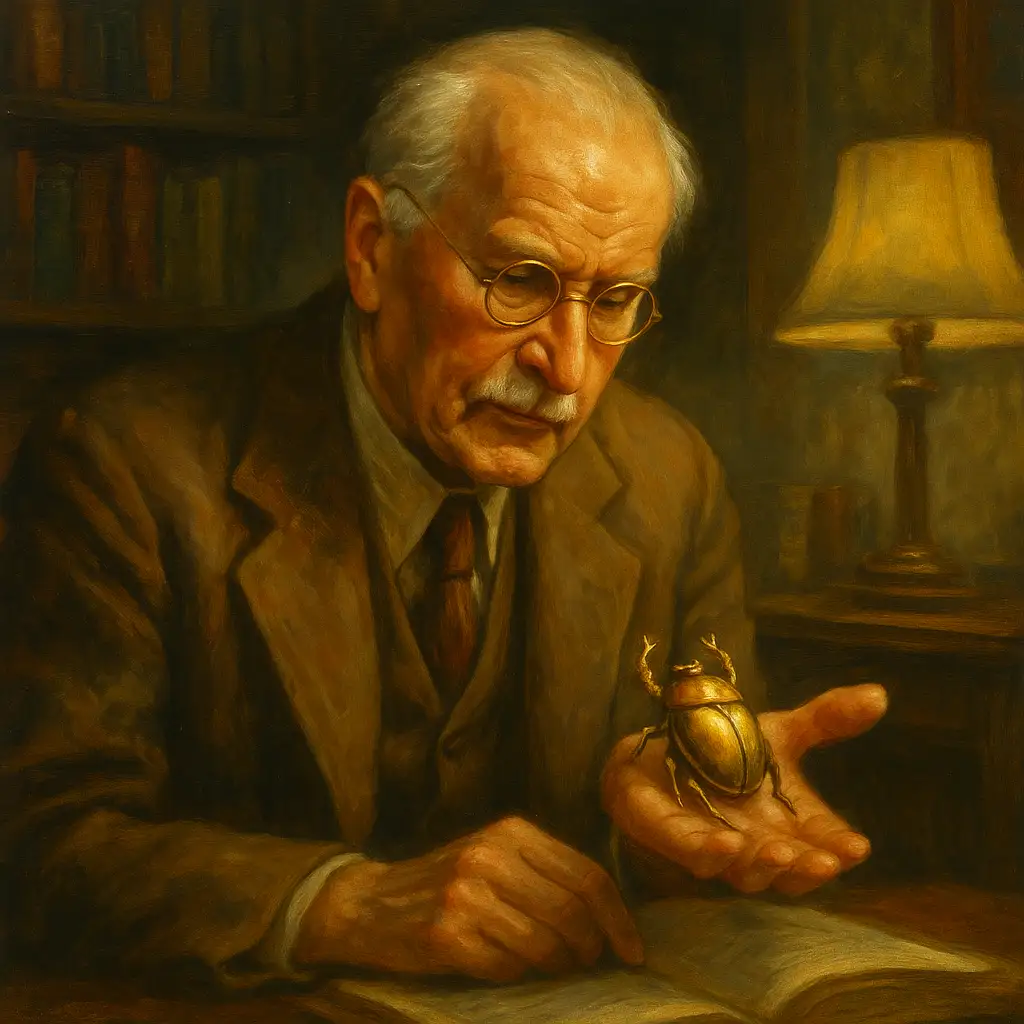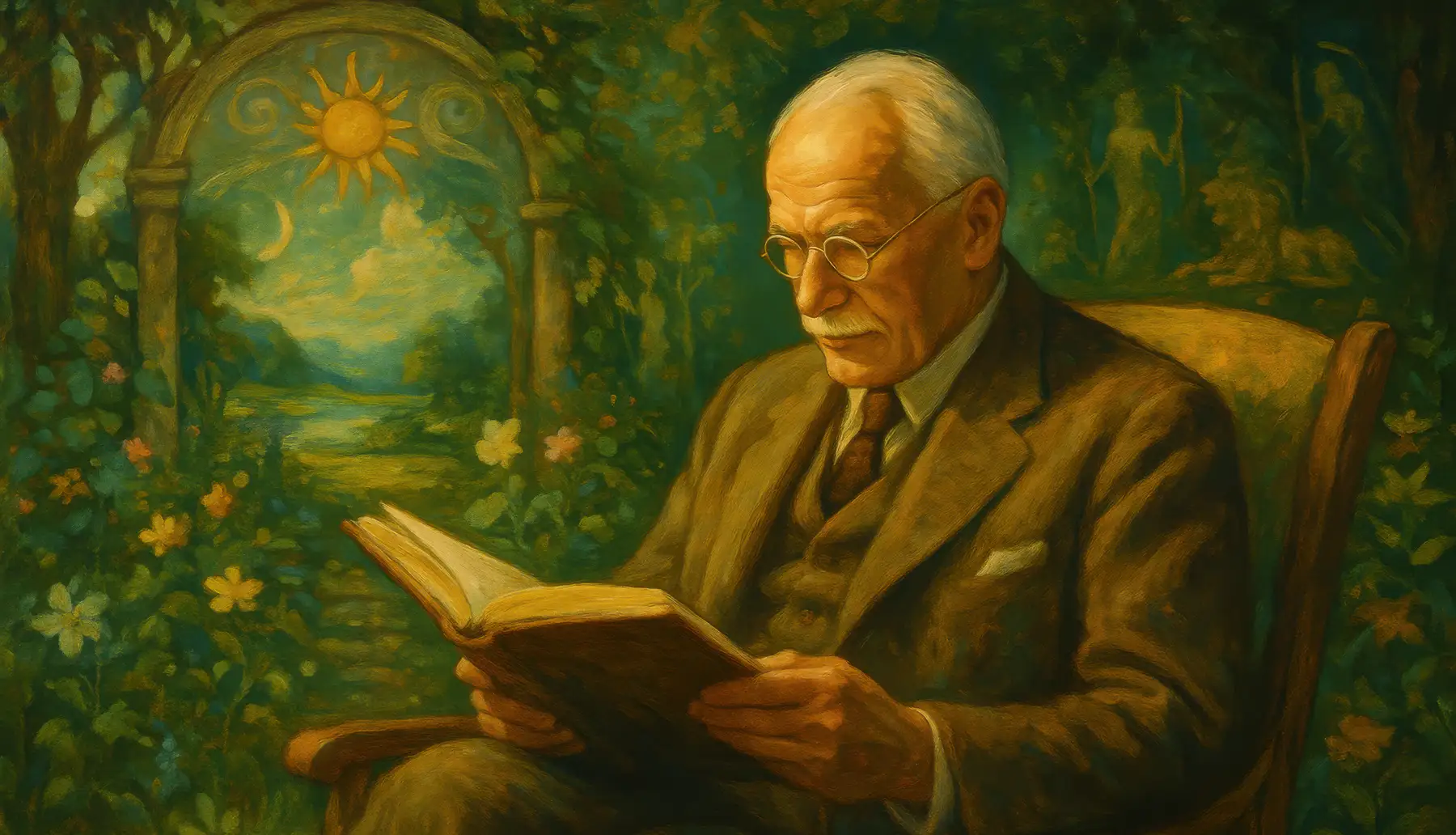BOOK YOUR WORKSHOP TODAY
All posts published here are presented as casual conversation pieces to provoke thought in some direction or another, they do not necessarily represent fixed opinions of the Inner Council, as our work exists beyond the spectrum of bound statement and singular clause.
Explore Carl Jung’s childhood insights to understand Inner Child work, behavioural patterns and the deeper psychic structures shaping early development.
Key Takeaways
- Jung’s childhood reflections reveal the depth and clarity of early psychic awareness.
- Inner Child work requires recognising distinct internal roles and contradictions.
- Childhood behavioural patterns form as strategies to meet unmet emotional needs.
- Children perceive intention clearly, and deflection from adults can create alienation.
Carl Jung’s Inner Child Work

In Jung’s autobiography, Memories, Dreams, Reflections, there are several episodes that allow us to understand the level of awareness that was present throughout Jung’s childhood, or the analysis that had taken place during a long and detailed exploration of youth. Jung demonstrates an ability to accept the irrational content of his personal primary developmental stages, not seeking to patronise or justify the logical impairment of the child. We use these examples—where relevant—during our Inner Child Workshops in order to demonstrate both Jung’s validation of childhood perspective and the wider mechanics of archetypal structures of psyche.
What Jung championed was personal responsibility and authority in self-discovery and reflection. Academia did not provide Jung with the tools of his analysis. Instead, it gave him conventional access to operate as a doctor—a title Jung himself deemed merely a convenience, allowing him to engage with the subjects central to his exploration of inner human experience.
Contradictory roles of the psyche
An important aspect of inner child work is to identify the specific needs of the emotional and vulnerable self, which means putting aside the roles that offer no such conscientious treatment. In making this division we can address contradictions that were paradoxical parts of the bigger whole, but clear once divided. An idea of making a fresh break before the bones can set is fundamental in deep psychological reprogramming. So now we are 4 separate persons, the spiritual self, the adult, the parent and the child.
Our first story takes place when Carl Jung was not yet a teen, but nonetheless demonstrates an awareness in separately identifying the child and the adult roles of his inner personality. He was able—in real time—to manage the contradiction and achieve a reasonable outcome. The event is told as such.
I was invited to spend the holidays with friends of the family who had a house on Lake Lucerne. To my delight the house was situated right on the lake, and there was a boat-house and a rowing boat. My host allowed his son and me to use the boat, although we were sternly warned not to be reckless. Unfortunately I also knew how to steer a Waidling (a boat of the gondola type) — that is to say, standing. At home we had such a punt, in which we had tried out every imaginable trick. The first thing I did, therefore, was to take my stand on the stern seat and with one oar push off into the lake. That was too much for the anxious master of the house. He whistled us back and gave me a first-class dressing-down. I was thoroughly crestfallen but had to admit that I had done exactly what he had said not to, and that his lecture was quite justified. At the same time I was seized with rage that this fat, ignorant boor should dare to insult ME. This ME was not only grown up, but important, an authority, a person with office and dignity, an old man, an object of respect and awe. Yet the contrast with reality was so grotesque that in the midst of my fury I suddenly stopped myself, for the question rose to my lips: “Who in the world are you, anyway? You are reacting as though you were the devil only knows how important! And yet you know he is perfectly right. You are barely twelve years old, a schoolboy, and he is a father and a rich, powerful man besides, who owns two houses and several splendid horses.”
Then, to my intense confusion, it occurred to me that I was actually two different persons. One of them was the schoolboy who could not grasp algebra and was far from sure of himself; the other was important, a high authority, a man not to be trifled with, as powerful and influential as this manufacturer. This “Other” was an old man who lived in the eighteenth century, wore buckled shoes and a white wig and went driving in a fly with high, concave rear wheels between which the box was suspended on springs and leather straps.
To understand Inner Child work, we must recognise the different selves within us and allow each to hold its proper role. Jung’s childhood story beautifully illustrates this division: even at twelve, he could sense the contradiction between his vulnerable boy-self and the authoritative inner figure who rose in outrage. By pausing, observing and acknowledging both identities, he discovered he was not one undivided personality, but a constellation of selves with distinct needs and perspectives. This is the essence of the work—separating the child, the adult, the parent and the spiritual self so each can be met, understood and guided with clarity.
Behavioural pattern analysis
Our Inner Child workshop is a preparation for fulfilling a commitment to the emotional part of ourselves that we will do whatever it takes to heal the wounds of our inner child. This commitment can only be taken seriously if one has considered the aspects of the primary developmental stages and the formation of behaviours in order to meet our basic needs. The behavioural patterns or neurosis that we discuss are in three core areas of self.
- Looking outside ourselves for approval
- Helping others for recognition and praise
- Lowering expectation by presenting vulnerability
The last aspect is often described as victimisation, but it is a multifaceted strategy for achieving a sense of safety throughout childhood and can become a behavioural pattern if repeated advantage is gained. The disadvantage only comes when considering the contradiction present for the other aspects of self, something which Carl Jung fully analyses in his prognostication and foretelling of the condition.
My twelfth year was indeed a fateful one for me. One day in the early summer of 1887 I was standing in the cathedral square, waiting for a classmate who went home by the same route as myself. It was twelve o’clock, and the morning classes were over. Suddenly another boy gave me a shove that knocked me off my feet. I fell, striking my head against the kerbstone so hard that I almost lost consciousness. For about half an hour afterwards I was a little dazed. At the moment I felt the blow the thought flashed through my mind: “Now you won’t have to go to school any more.” I was only half unconscious, but I remained lying there a few moments longer than was strictly necessary, chiefly in order to avenge myself on my assailant. Then people picked me up and took me to a house nearby, where two elderly spinster aunts lived.
From then on I began to have fainting spells whenever I had to return to school, and whenever my parents set me to doing my homework. For more than six months I stayed away from school, and for me that was a picnic. I was free, could dream for hours, be anywhere I liked, in the woods or by the water, or draw. I resumed my battle pictures and furious scenes of war, of old castles that were being assaulted or burned, or drew page upon page of caricatures. Similar caricatures sometimes appear to me before falling asleep to this day, grinning masks that constantly move and change, among them familiar faces of people who soon afterwards died. Above all, I was able to plunge into the world of the mysterious. To that realm belonged trees, a pool, the swamp, stones and animals, and my father’s library. But I was growing more and more away from the world, and had all the while faint pangs of conscience. I frittered away my time with loafing, collecting, reading, and playing. But I did not feel any happier for it; I had the obscure feeling that I was fleeing from myself.
I forgot completely how all this had come about, but I pitied my parents’ worries. They consulted various doctors, who scratched their heads and packed me off to spend the holidays with relatives in Winterthur. This city had a railroad station that proved a source of endless delight to me. But when I returned home everything was as before. One doctor thought I had epilepsy. I knew what epileptic fits were like and inwardly laughed at such nonsense. My parents became more worried than ever. Then one day a friend called on my father. They were sitting in the garden and I hid behind a shrub, for I was possessed of an insatiable curiosity. I heard the visitor saying to my father, “And how is your son?” “Ah, that’s a sad business,” my father replied. “The doctors no longer know what is wrong with him. They think it may be epilepsy. It would be dreadful if he were incurable. I have lost what little I had, and what will become of the boy if he cannot earn his own living?”
I was thunderstruck. This was the collision with reality. “Why, then, I must get to work!” I thought suddenly.
From that moment on I became a serious child. I crept away, went to my father’s study, took out my Latin grammar, and began to cram with intense concentration. After ten minutes of this I had the finest of fainting fits. I almost fell off the chair, but after a few minutes I felt better and went on working. “Devil take it, I’m not going to faint,” I told myself, and persisted in my purpose. This time it took about fifteen minutes before the second attack came. That, too, passed like the first. “And now you must really get to work!” I stuck it out, and after an hour came the third attack. Still I did not give up, and worked for another hour, until I had the feeling that I had overcome the attacks. Suddenly I felt better than I had in all the months before. And in fact the attacks did not recur. From that day on I worked over my grammar and other schoolbooks every day. A few weeks later I returned to school, and never suffered another attack, even there. The whole bag of tricks was over and done with! That was when I learned what a neurosis is.
The behavioural strategies we form in childhood—seeking approval, performing care for recognition or lowering expectations through vulnerability—are not flaws but adaptive attempts to secure safety. Jung’s story reveals how such patterns can crystallise into neurosis when emotional contradictions are left unexamined. His fainting spells were not medical mystery but a behavioural loop offering escape, protection and unconscious advantage. When the reality of his family’s fear broke through, he recognised both the pattern and his capacity to outgrow it. This is the task of Inner Child work: to understand our early strategies with compassion, and consciously choose a healthier role for each part of the self.
Deflective parenting
I remember a Spanish friend I had when living in Sydney who was humoured by the encounters he had where his limited use of the English language was often perceived as an indication of low cognitive aptitude and treated very much like a child—as that must have been the level of coherence he was demonstrating. As parents, we need to seriously consider that coming back into a nervous system—as challenging as that appears to be for humans—is somewhat a biological process. Despite being on the back foot with established linguistic capacity, conceptual frameworks and deep experiential meaning, our level of psychic awareness remains clear and acute. We are able as children to perceive complex levels of intent, and it’s reasonable to conjecture that deflections of inquiry are understood by children as exactly what they are. Cultural behavioural gesturing. The problem that arises from the deflection of inquiry is that one can’t tell if the deflector is self aware of the process, potentially leaving the child with a sense of alienation. As deflection dismisses the perspective of the child, the emotional needs of the child are left unmet. I have many personal reflections from childhood where higher-level analyses were present, shifting the immediate activity from primary focus. These experiences were accompanied by a host of internal existential inquiry. Here is Jung’s superb example of such an imposition.
When I was nine years old my mother had had a little girl. My father was excited and pleased. “To-night you’ve been given a little sister,” he said to me, and I was utterly surprised, for I hadn’t noticed anything. I had thought nothing of my mother’s lying in bed more frequently than usual, for I considered her taking to her bed an inexcusable weakness in any case. My father brought me to my mother’s bedside, and she held out a little creature that looked dreadfully disappointing: a red, shrunken face like an old man’s, the eyes closed, and probably as blind as a young puppy, I thought. On its back the thing had a few single long red hairs which were shown to me — had it been intended for a monkey? I was shocked and did not know what to feel. Was this how newborn babies looked? They mumbled something about the stork which was supposed to have brought the baby. But then what about a litter of puppies or kittens? How many times would the stork have to fly back and forth before the litter was complete? And what about cows? I could not imagine how the stork could manage to carry a whole calf in its bill. Besides, the farmers said the cow calved, not that the stork brought the calf. This story was obviously another of those humbugs which were always being imposed on me. I felt sure that my mother had once again done something I was supposed not to know about.
Deflective parenting often arises when adults underestimate the child’s perceptive intelligence, assuming limited language implies limited awareness. Yet children read intent with startling clarity, and when their inquiries are met with diversion or fabricated narratives, they recognise the distortion even if they cannot articulate it. Jung’s memory reveals this beautifully: despite adult reassurances, he instantly sensed the imposed story and the emotional dishonesty behind it. Such deflections create alienation, leaving the child unsure whether the adult is confused or concealing truth. Inner Child work invites us to revisit these moments with honesty, restoring the integrity and trust that were missing then.
Higher level awareness
Both Maria Montessori and Rudolph Steiner (Waldorf education) operated from an assumption of a separate psychic process that was carefully orchestrating the developmental process in the child. As such, part of this psychic process assesses the sincerity of the environmental components. Some children will not take impressions from their direct parents of masculine and feminine influences, they will settle these roles from the persons who set the best example of each, be that grandparents, older siblings or even carers. In truly understanding this background component, we can reassess the conditions of childhood episodes to bring integration to the continued commitment in healing the wounds of our inner child.
For more information about Carl Jung’s concepts in Inner Child work, please read our article The Inner Council & Jungian Vision
Recommended reading
The Keeper of Destiny: Michael Meade’s Genius Myth and the Inner Child
Bridges mythic imagination with developmental healing, helping readers understand the deep symbolic layer of childhood experience.
Memories, Dreams, Reflections — Carl Jung
A primary source for Jung’s childhood insights, inner world encounters and emerging understanding of psychic multiplicity.
The Drama of the Gifted Child — Alice Miller
A foundational exploration of childhood emotional needs, parental projections and the lifelong effects of psychic abandonment.
The Body Keeps the Score — Bessel van der Kolk
A trauma-focused perspective demonstrating how early impressions shape behaviour, personality and emotional regulation across a lifetime.
The Child’s Changing Consciousness — Rudolf Steiner
A developmental view of how a child’s inner awareness evolves, highlighting their sensitivity to intention, authenticity and the subtle movements of the adult world.






